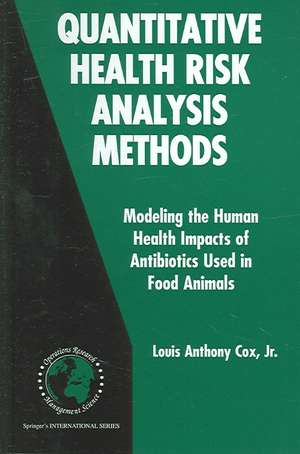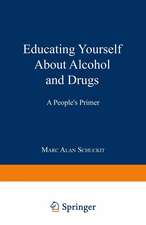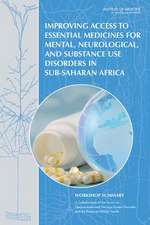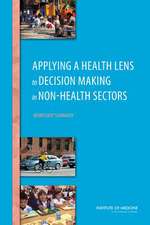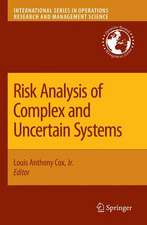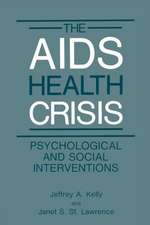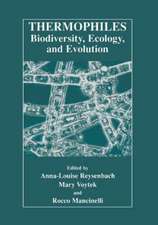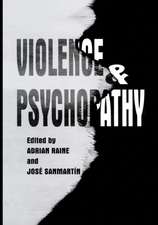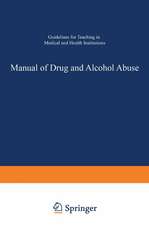Quantitative Health Risk Analysis Methods: Modeling the Human Health Impacts of Antibiotics Used in Food Animals: International Series in Operations Research & Management Science, cartea 82
Autor Louis Anthony Cox Jr.en Limba Engleză Hardback – 21 noi 2005
| Toate formatele și edițiile | Preț | Express |
|---|---|---|
| Paperback (1) | 1098.63 lei 6-8 săpt. | |
| Springer Us – 19 noi 2010 | 1098.63 lei 6-8 săpt. | |
| Hardback (1) | 727.24 lei 6-8 săpt. | |
| Springer Us – 21 noi 2005 | 727.24 lei 6-8 săpt. |
Din seria International Series in Operations Research & Management Science
- 20%
 Preț: 331.25 lei
Preț: 331.25 lei - 20%
 Preț: 570.61 lei
Preț: 570.61 lei - 18%
 Preț: 1132.02 lei
Preț: 1132.02 lei - 18%
 Preț: 773.72 lei
Preț: 773.72 lei -
 Preț: 170.39 lei
Preț: 170.39 lei - 17%
 Preț: 459.34 lei
Preț: 459.34 lei - 17%
 Preț: 360.47 lei
Preț: 360.47 lei -
 Preț: 263.40 lei
Preț: 263.40 lei - 24%
 Preț: 905.30 lei
Preț: 905.30 lei - 17%
 Preț: 460.08 lei
Preț: 460.08 lei - 17%
 Preț: 459.34 lei
Preț: 459.34 lei - 20%
 Preț: 631.58 lei
Preț: 631.58 lei - 13%
 Preț: 480.00 lei
Preț: 480.00 lei - 18%
 Preț: 738.28 lei
Preț: 738.28 lei - 18%
 Preț: 1225.94 lei
Preț: 1225.94 lei - 18%
 Preț: 948.92 lei
Preț: 948.92 lei - 18%
 Preț: 703.88 lei
Preț: 703.88 lei - 18%
 Preț: 957.44 lei
Preț: 957.44 lei - 15%
 Preț: 651.84 lei
Preț: 651.84 lei - 20%
 Preț: 336.21 lei
Preț: 336.21 lei - 15%
 Preț: 641.03 lei
Preț: 641.03 lei -
 Preț: 404.29 lei
Preț: 404.29 lei - 18%
 Preț: 950.21 lei
Preț: 950.21 lei - 15%
 Preț: 649.06 lei
Preț: 649.06 lei - 18%
 Preț: 725.75 lei
Preț: 725.75 lei -
 Preț: 394.12 lei
Preț: 394.12 lei - 18%
 Preț: 951.47 lei
Preț: 951.47 lei - 15%
 Preț: 639.59 lei
Preț: 639.59 lei - 18%
 Preț: 773.06 lei
Preț: 773.06 lei - 18%
 Preț: 889.29 lei
Preț: 889.29 lei - 15%
 Preț: 655.60 lei
Preț: 655.60 lei - 15%
 Preț: 640.06 lei
Preț: 640.06 lei - 15%
 Preț: 583.93 lei
Preț: 583.93 lei
Preț: 727.24 lei
Preț vechi: 765.51 lei
-5% Nou
Puncte Express: 1091
Preț estimativ în valută:
139.16€ • 145.59$ • 115.60£
139.16€ • 145.59$ • 115.60£
Carte tipărită la comandă
Livrare economică 02-16 aprilie
Preluare comenzi: 021 569.72.76
Specificații
ISBN-13: 9780387259093
ISBN-10: 0387259090
Pagini: 354
Ilustrații: XVIII, 354 p.
Dimensiuni: 155 x 235 x 22 mm
Greutate: 0.7 kg
Ediția:2006
Editura: Springer Us
Colecția Springer
Seria International Series in Operations Research & Management Science
Locul publicării:New York, NY, United States
ISBN-10: 0387259090
Pagini: 354
Ilustrații: XVIII, 354 p.
Dimensiuni: 155 x 235 x 22 mm
Greutate: 0.7 kg
Ediția:2006
Editura: Springer Us
Colecția Springer
Seria International Series in Operations Research & Management Science
Locul publicării:New York, NY, United States
Public țintă
ResearchCuprins
Qualitative and Quantitative Risk Analysis.- Risk Analysis: Goals and Methods.- Hazard Identification.- Exposure Assessment.- Dose-Response Modeling and Risk Characterization.- Human Health Risks from Virginiamycin: A Case Study.- Dynamic Modeling and Uncertainty Analysis.- Potential Human Health Benefits of Animal Antibiotics.
Recenzii
From the reviews:
"This book grew out of an effort to salvage a potentially useful idea for greatly simplifying traditional quantitative risk assessments of the human health consequences of using antibiotics in food animals. … It is truly a pioneering study in this previously underdeveloped area of applied risk assessment. This book should be highly instructive to those interested in attempting to model potential human risks of antimicrobial resistance from complex food exposure pathways. … The book is a tremendous reference resource … ." (T. Postelnicu, Zentralblatt MATH, Vol. 1095 (21), 2006)
"This extensively treated application clarifies health risk analysis methods to the reader. It is very well readable. ... The book clearly demonstrates the practical power of data-driven quantitative risk assessment in improving modeling of human health risks created and prevented by antibiotics ... . I do recommend this book." (V. de Valk, Kwantitatieve Methoden, April, 2007)
"This book grew out of an effort to salvage a potentially useful idea for greatly simplifying traditional quantitative risk assessments of the human health consequences of using antibiotics in food animals. … It is truly a pioneering study in this previously underdeveloped area of applied risk assessment. This book should be highly instructive to those interested in attempting to model potential human risks of antimicrobial resistance from complex food exposure pathways. … The book is a tremendous reference resource … ." (T. Postelnicu, Zentralblatt MATH, Vol. 1095 (21), 2006)
"This extensively treated application clarifies health risk analysis methods to the reader. It is very well readable. ... The book clearly demonstrates the practical power of data-driven quantitative risk assessment in improving modeling of human health risks created and prevented by antibiotics ... . I do recommend this book." (V. de Valk, Kwantitatieve Methoden, April, 2007)
Textul de pe ultima copertă
"Antibiotic use in animals has aroused sharply polarised views and public anxiety about potential human health risks, stimulated by lack of any objective standard to help navigate among conflicting studies and perceptions. Tony Cox's Quantitative Health Risk Analysis Methods represents a giant leap forward, helping to provide such a standard. Notable improvements and increased scientific rigor in public health risk assessment and risk management can be expected from the insightful approaches lucidly described in this book. I will be recommending it enthusiastically to all students of public health." Stephen Page, University of Sydney Veterinary Public Health Management Program
"Tony Cox has been a true pioneer in this previously untouched niche area of applied risk assessment. This book should be highly instructive to those interested in attempting to model potential human health risks of antimicrobial resistance from complex food exposure pathways." Rich Carnevale, Animal Health Institute
"Tony Cox has been a true pioneer in this previously untouched niche area of applied risk assessment. This book should be highly instructive to those interested in attempting to model potential human health risks of antimicrobial resistance from complex food exposure pathways." Rich Carnevale, Animal Health Institute
Caracteristici
A thorough analytical treatment and exposition of some of the main quantitative methods that can be used to assess the risk of human health consequences of using antibiotics in food animals. The 'probable human health consequences of withdrawing or restricting current animal antibiotic use' is the question which is applied to each chapter The major goal of this book is to provide and illustrate methods for quantitative risk assessment and for comparing alternative risk management actions, given realistic limitations on scientific knowledge and available data. Some of the steps covered are hazard identification, exposure assessment, dose-response modeling, and risk characterization, including uncertainty and sensitivity analyses
